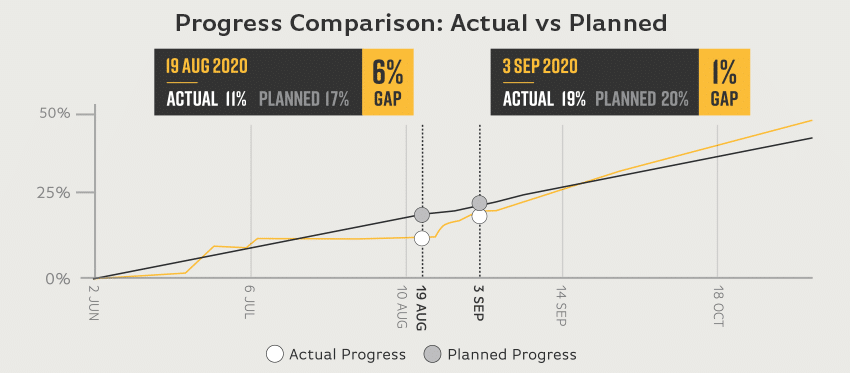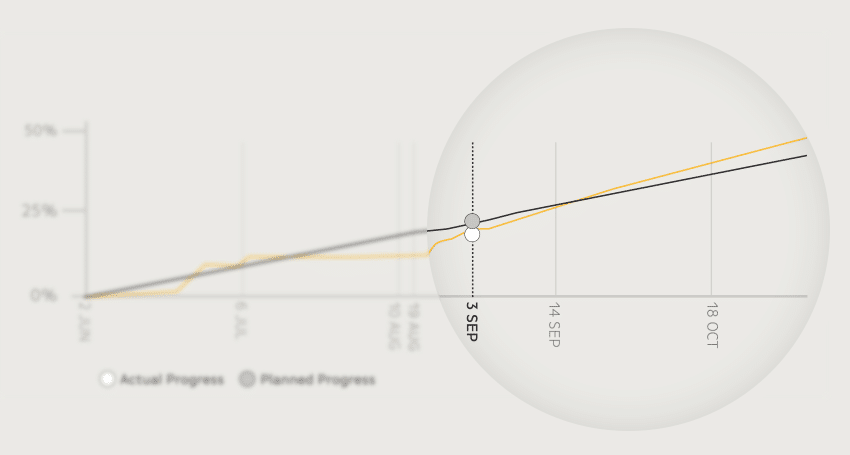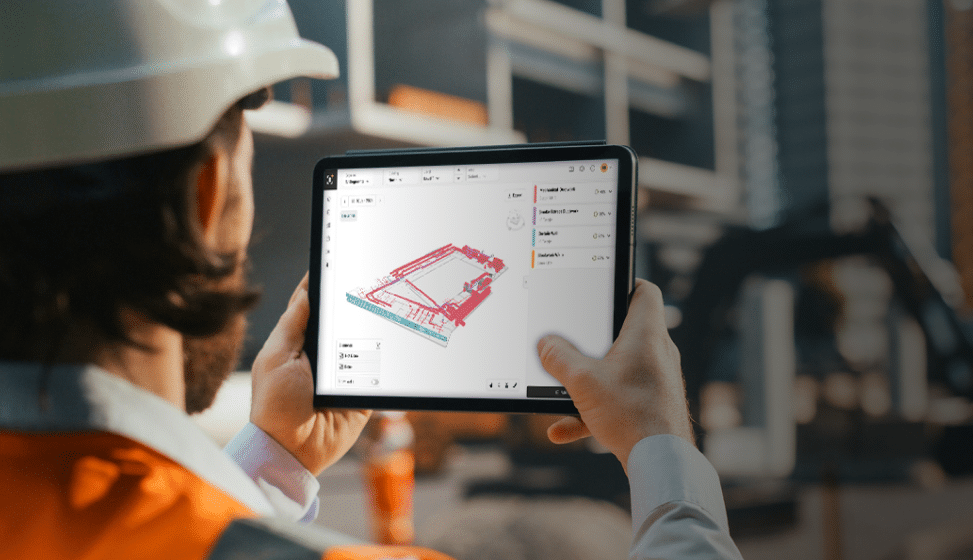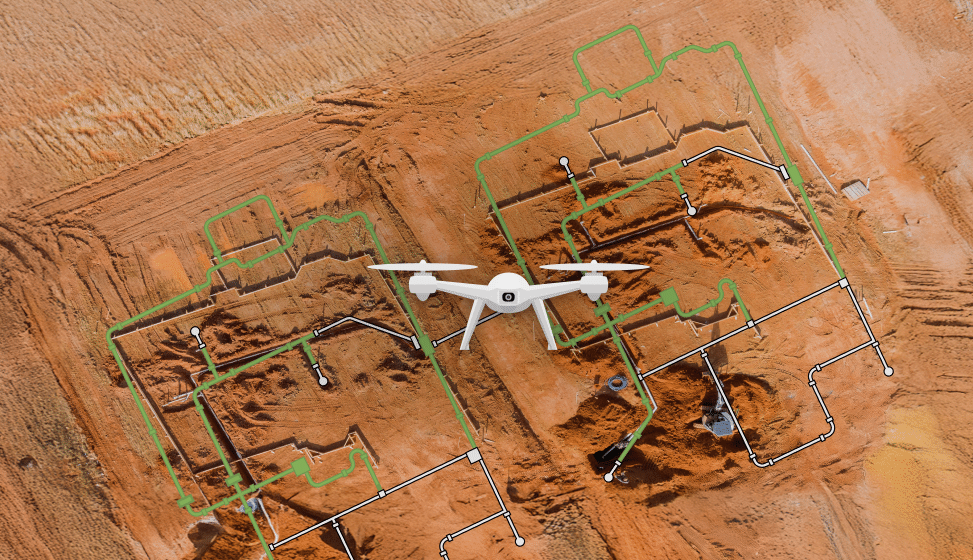Early Warnings: From Reactive To Proactive

As a construction manager, you know how difficult it can be to keep track of all the items that need to be accomplished as a project progresses. You also know that seemingly small issues or plan deviations can rapidly spiral out of control if not caught and addressed early. This invariably leads to expensive rework, missed deadlines, and overall project delays.
Be assured that you are not alone. These are problems that happen all too frequently on projects across the world. Whether construction defects or productivity issues, they all have a root cause; the issues were simply not identified early enough.
What if you could identify issues and make corrections when they first arise? What impact would that have on your project timeline and budget? How would that successful project help you land further projects and new clients?
It may sound like a fairytale to some, but the reality is that you can realize massive performance improvements for your project by putting smart technology to work. This technology is no longer something way off into the future. Instead, it is available right now to help projects flourish.
Here's a glimpse of what we're talking about.
Early detection provides a course correction
Buildots was recently used on a 36 story building project to track construction progress. Early on in the project (19 Aug 2020) it was noted that one of the trades was starting to deviate significantly from the project plan (6%). The construction manager immediately addressed this with the contractor. Two weeks later, the contractor was back on track and only trailing by 1%.

Left unchecked, the contractor’s deviation from the program could have become so great that it would not have been possible to catch up again. The contractor's lag started in early August and steadily grew larger.
Thanks to a proactive approach informed by objective data, substantial amounts of time and money were saved.
Why is construction so reactive?
Reactive construction management involves looking at past progress or events and then responding to those in an attempt to move forward. You are invariably left trying to put out fires, and you seldom have the opportunity to get back ahead of plans. It has been this way for decades, and construction management practices remain essentially unchanged.
On the other hand, the requirements of construction projects have changed and are increasingly presenting you with large challenges. Some of the most significant being:
- Large project scale with a high degree of complexity.
- A lack of data insights to inform decision-making.
- Shortage of skills and labor to manage progress and tasks.
Being reactive in your approach means that you are always on the back foot, trying to play catch-up.
Imagine then what a proactive approach would look like. You are no longer running around trying to piece subjective data together to inform your decision-making and planning. You have this information at your fingertips and based on this information you are able to plan for and prevent problems and delays happening in the first place. You are always one step ahead, guiding the project’s progress to successful completion.
At the heart of achieving a proactive approach like this is the use of objective data rather than subjective data. Let’s take a look at what these are.
Objective data, the key to proactive construction management
Individual opinions or feelings heavily influence subjective information or data. Construction teams typically rely on manual reporting, which leads to a lack of visibility of what is happening on the project. In turn, decisions are being made based on missing or incorrect information.
On the other hand, Objective data relies purely on fact and evidence. When using Buildots, this takes the form of regular 360° footage captured onsite as well as your BIM models that govern the design. Within those data sources lies the source of truth for how the project needs to be constructed.
Relying on this objective data opens the door for you to use smart technologies to do the heavy lifting of checking the completion and correctness of constructed elements.
But there is a catch here. The sheer volume of available data can make it nearly impossible for humans to process and draw meaningful conclusions from it effectively. For example, the 360° captures on a typical residential high-rise project can quickly run over 7000 items. Attempting to compare these captures with the design intent every week will be a nearly impossible task.
This is the perfect opportunity to leverage smart technologies such as AI to do the heavy lifting.
Using AI & machine learning to harness the reliability of objective data?
Using AI and Machine Learning, Buildots puts the power back in your hands, allowing you to be on the front foot and be proactive in guiding the construction process. You no longer need to chase sources of subjective data to monitor progress.
Buildots actively compares onsite conditions to the BIM model and schedule, providing you with accurate results in a simple dashboard view. This dashboard now represents your single source of truth for proactive decision-making and evidence-based meetings.
Let’s take a look at this in practice.
Our project example, in the beginning, is an excellent example of this in action. Notice the longer-term effect, though. Because the construction management team decided to act early instead of paying later, the progress continued to trend ahead of schedule.

Conclusion
One of the greatest threats to any construction business is schedule and cost overruns. With construction projects becoming increasingly complex, it is no wonder that progressive companies are looking to AI and Machine Learning to help improve project performance and remain profitable.
This McKinsey report from 2018 on AI in Construction reiterates that early adopters of these technologies will be rewarded the most, setting the pace for others to follow.
Buildots is your partner in realizing these rewards for your next project, schedule a demo to see this in person.


